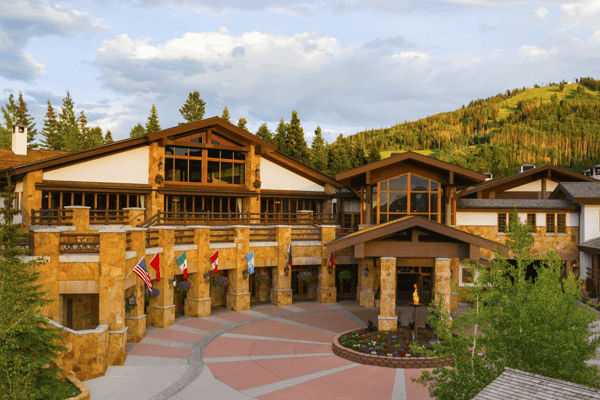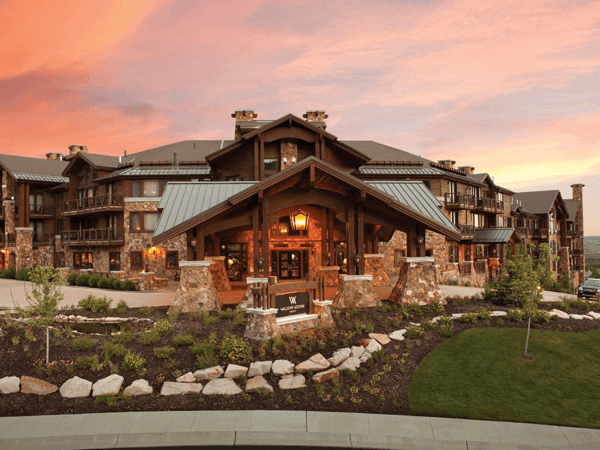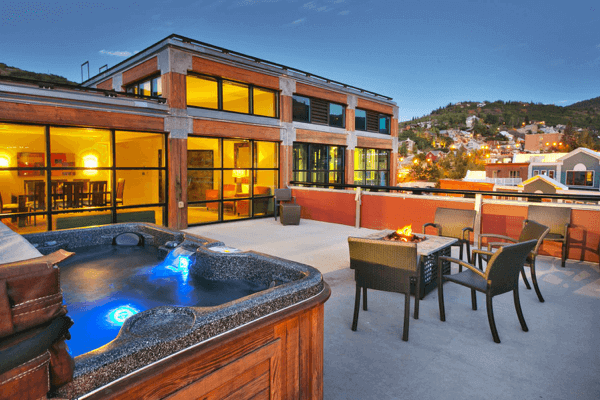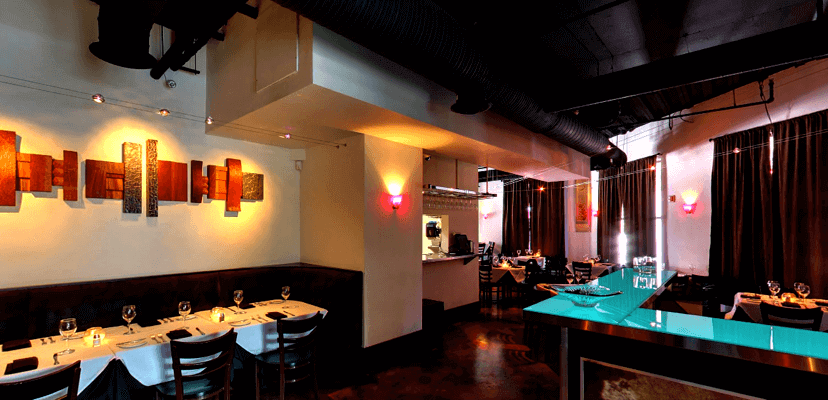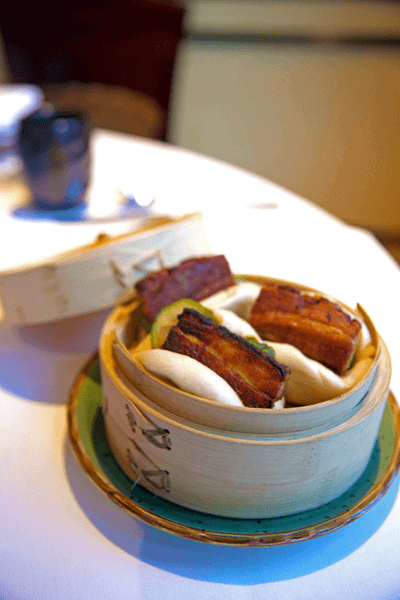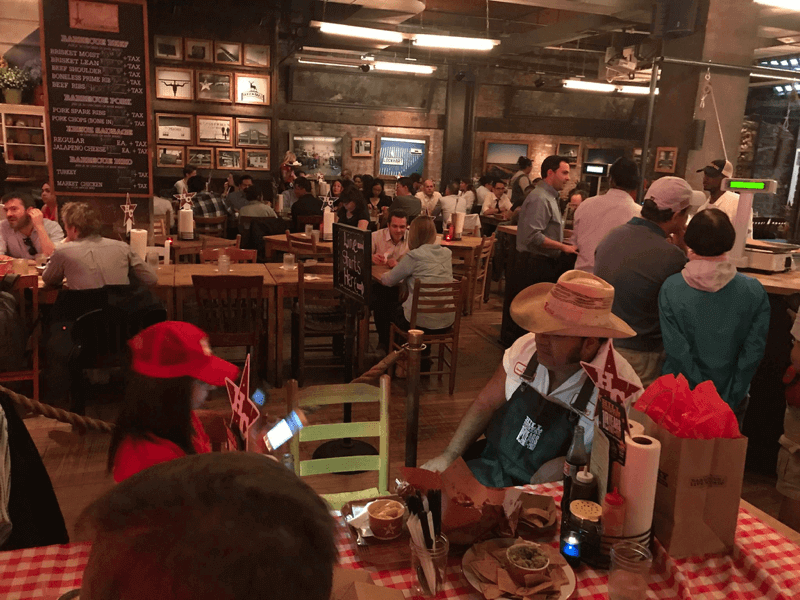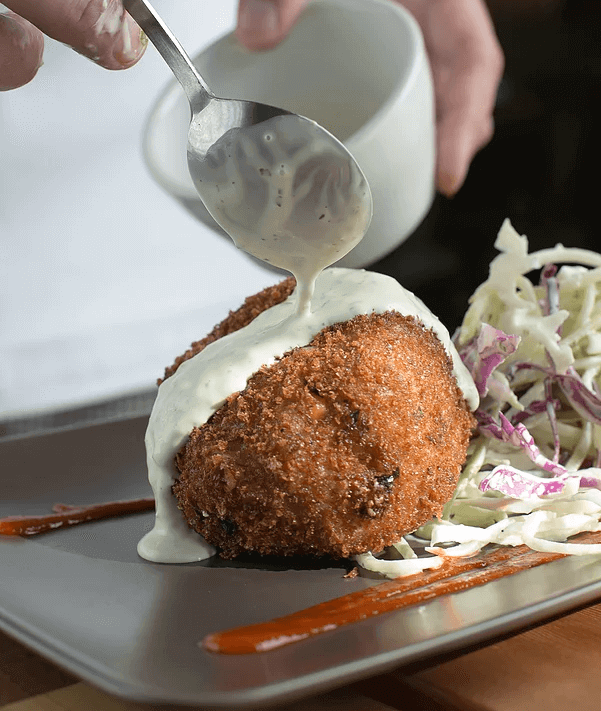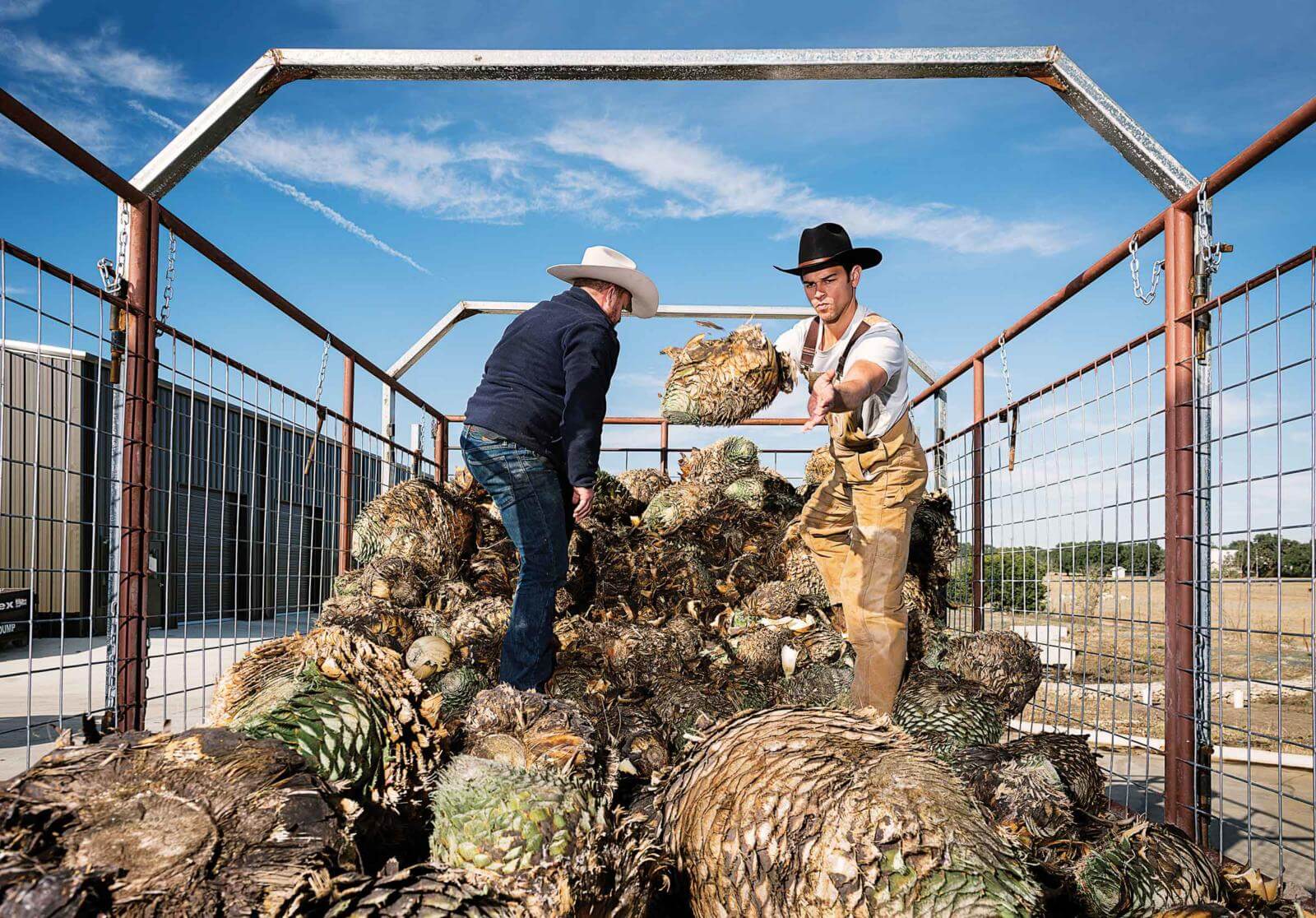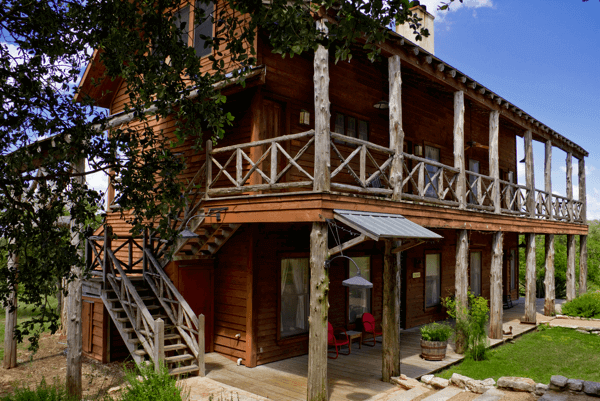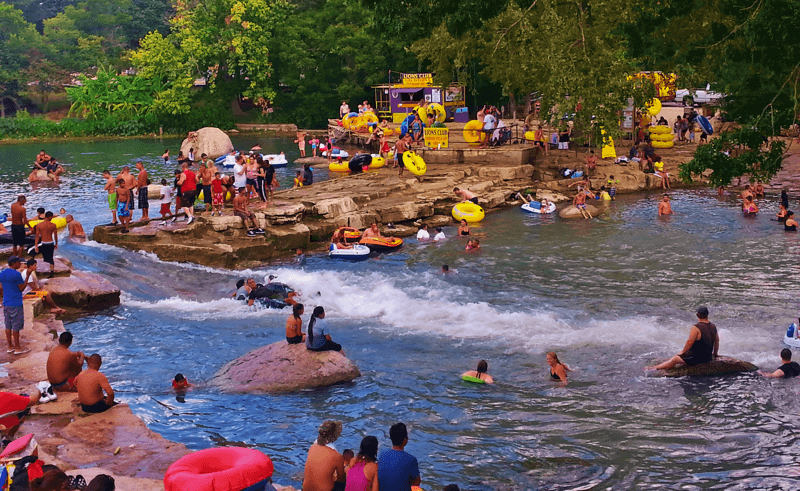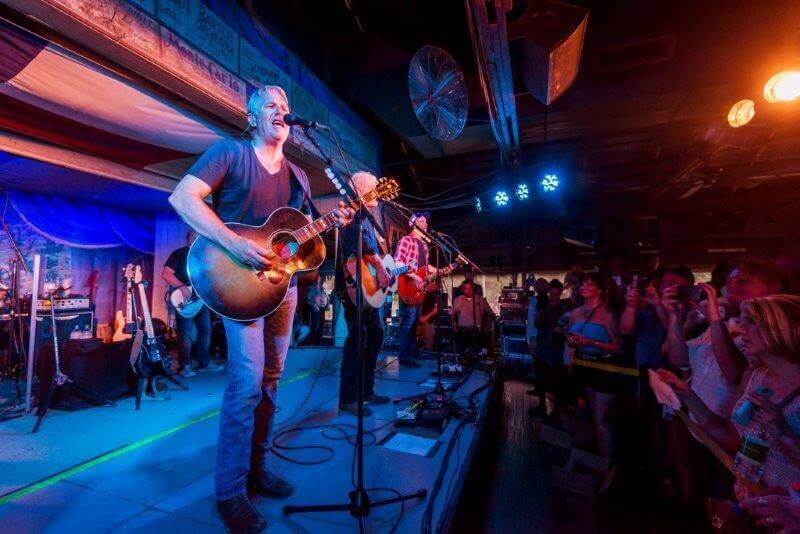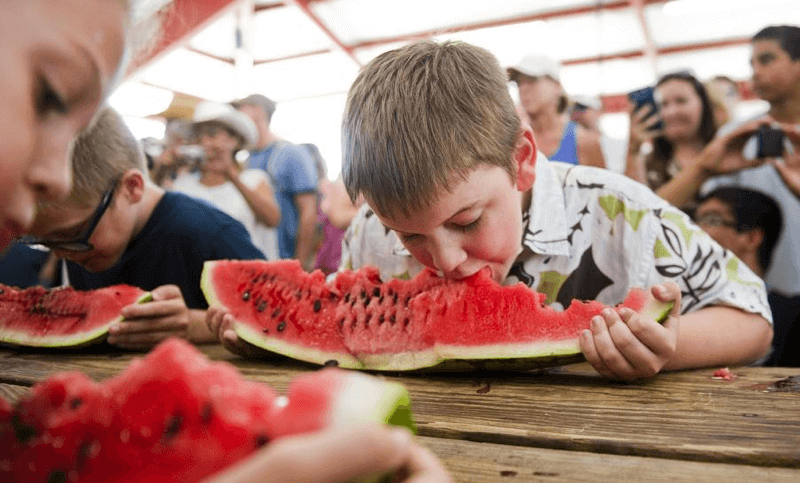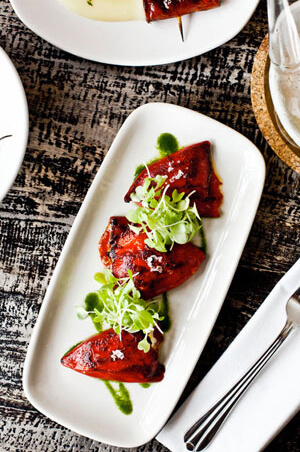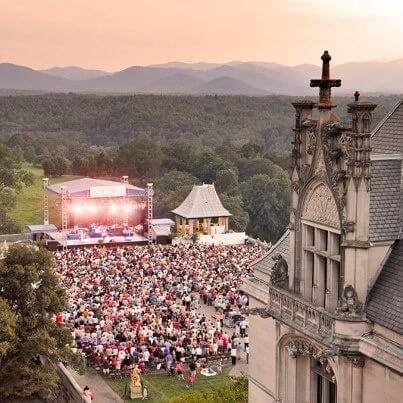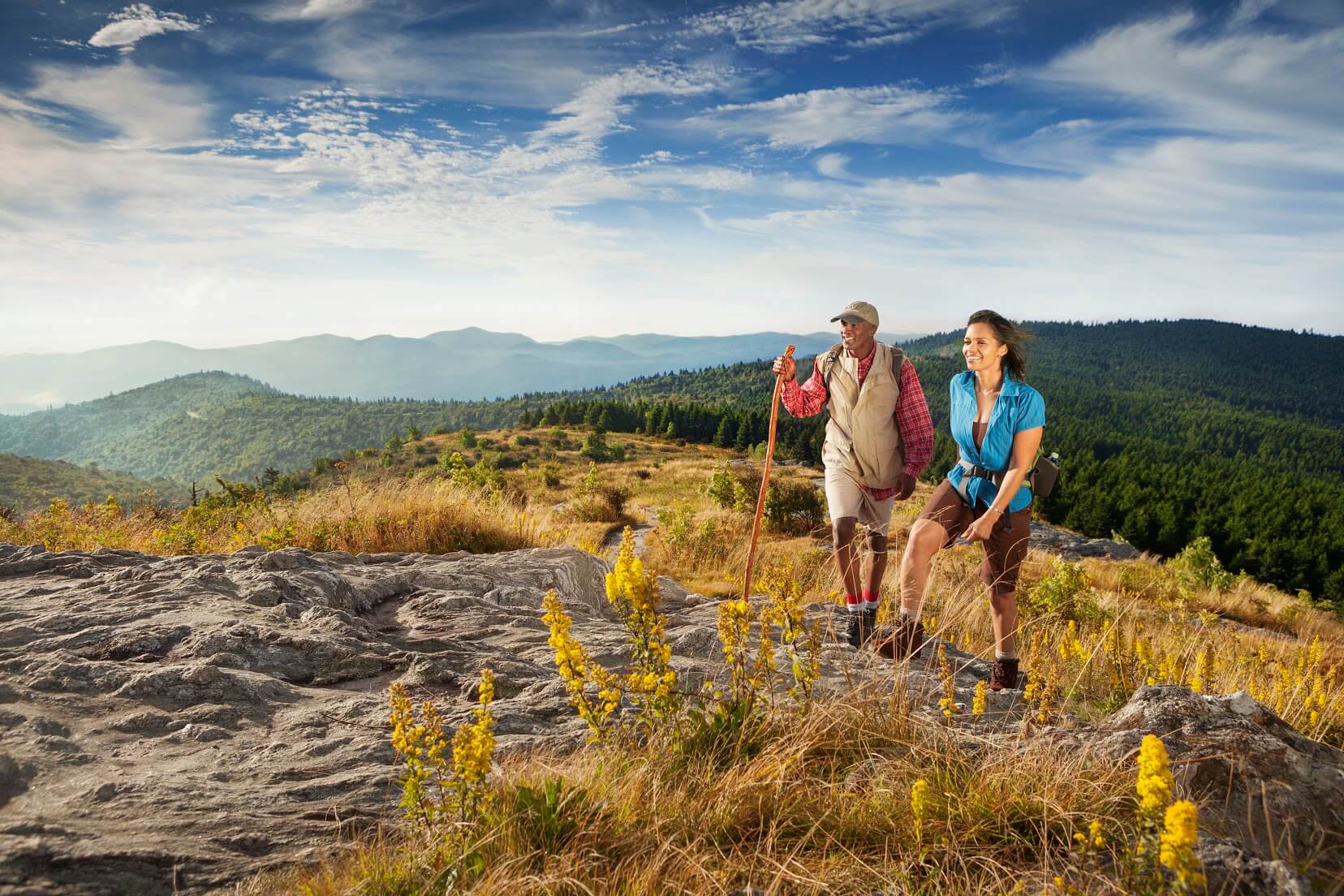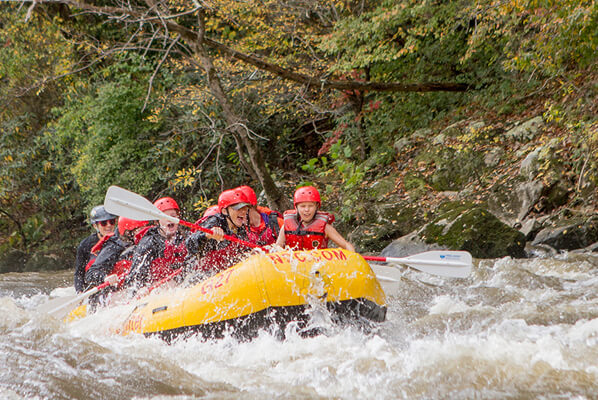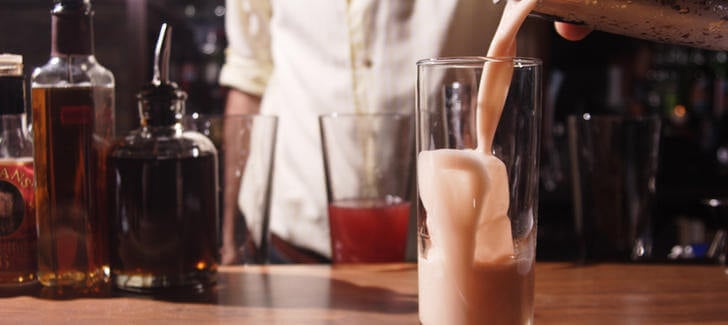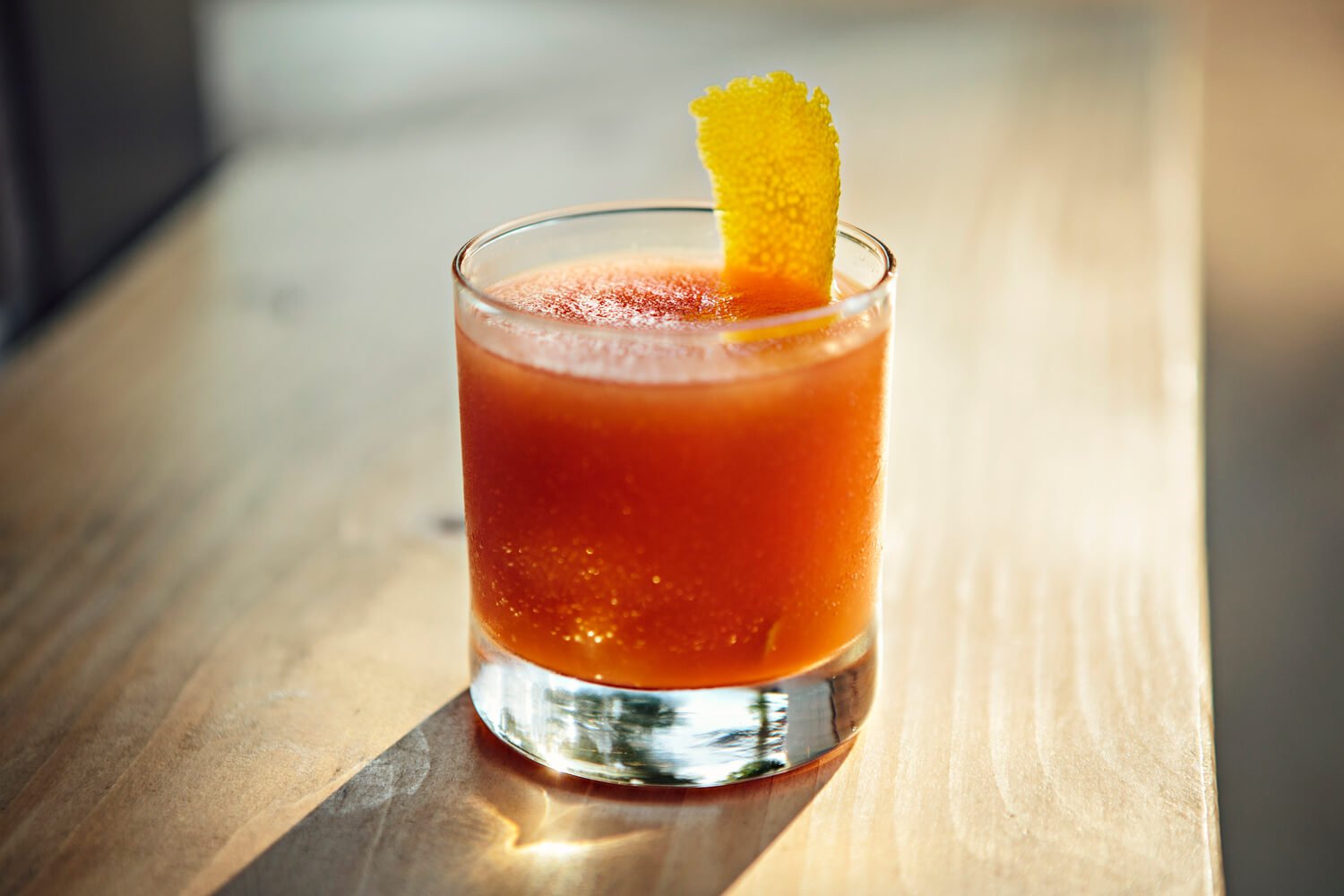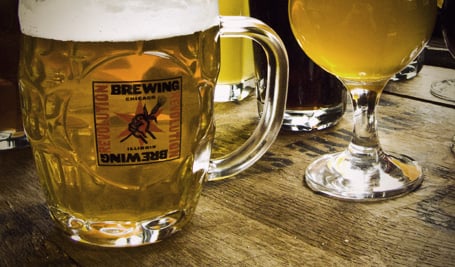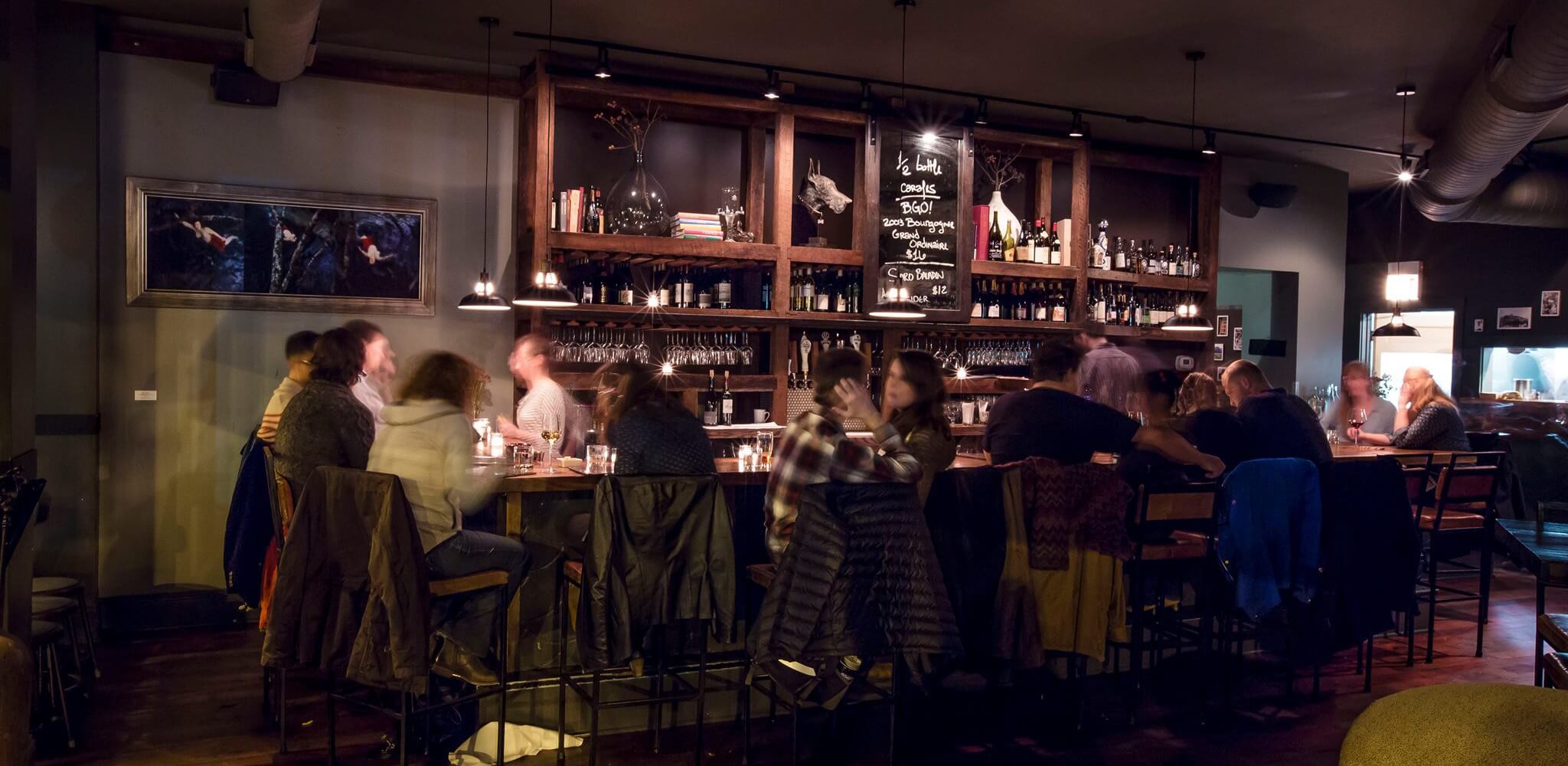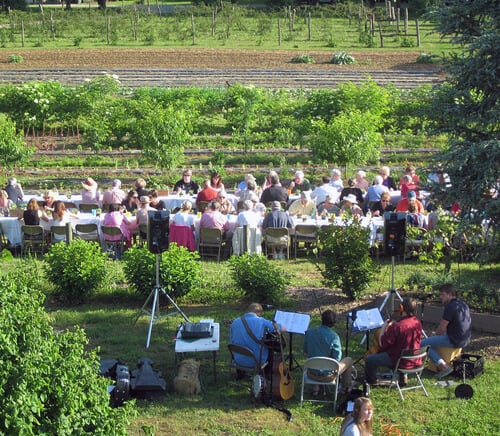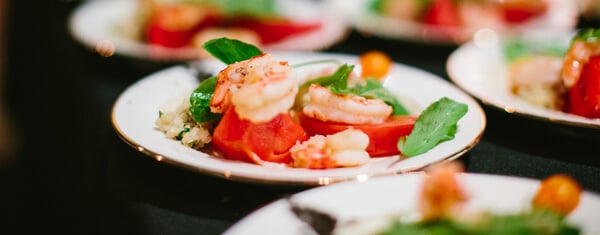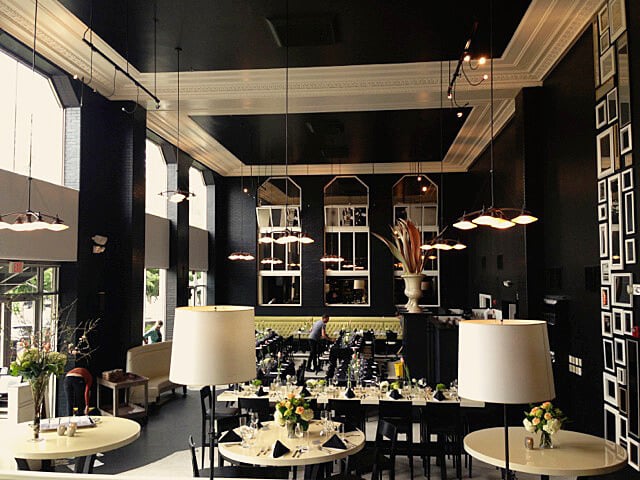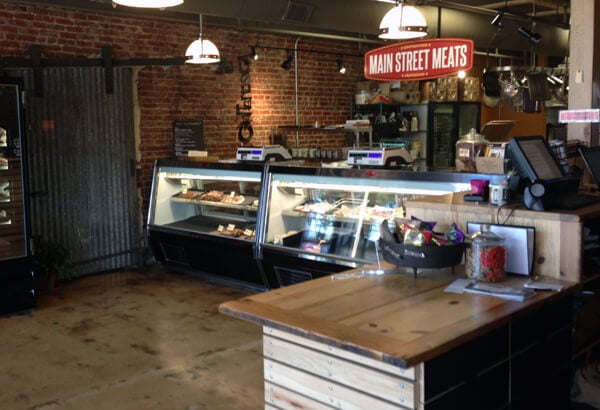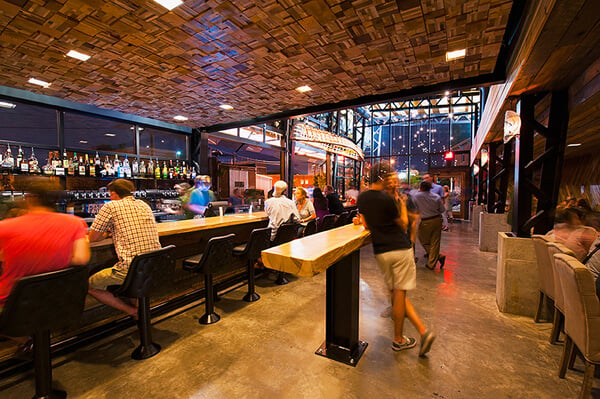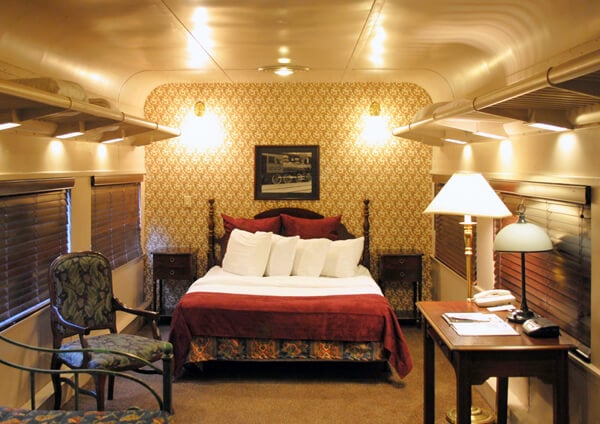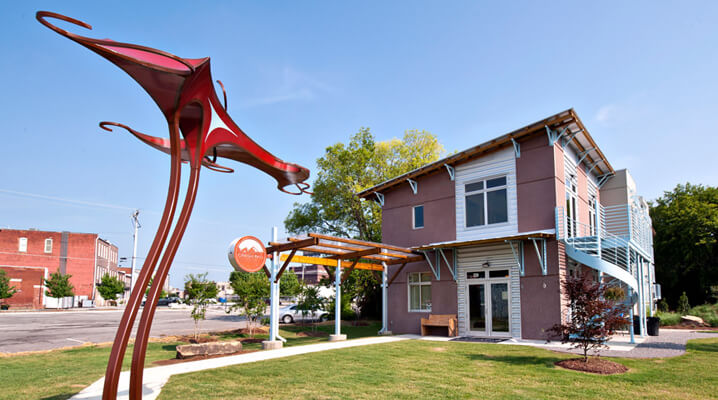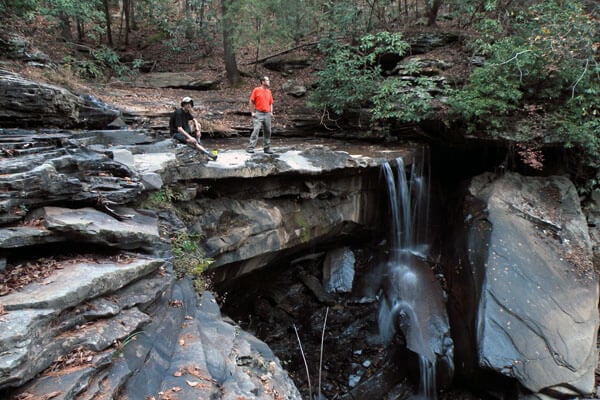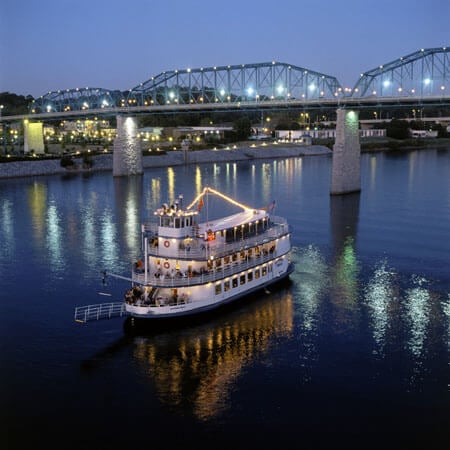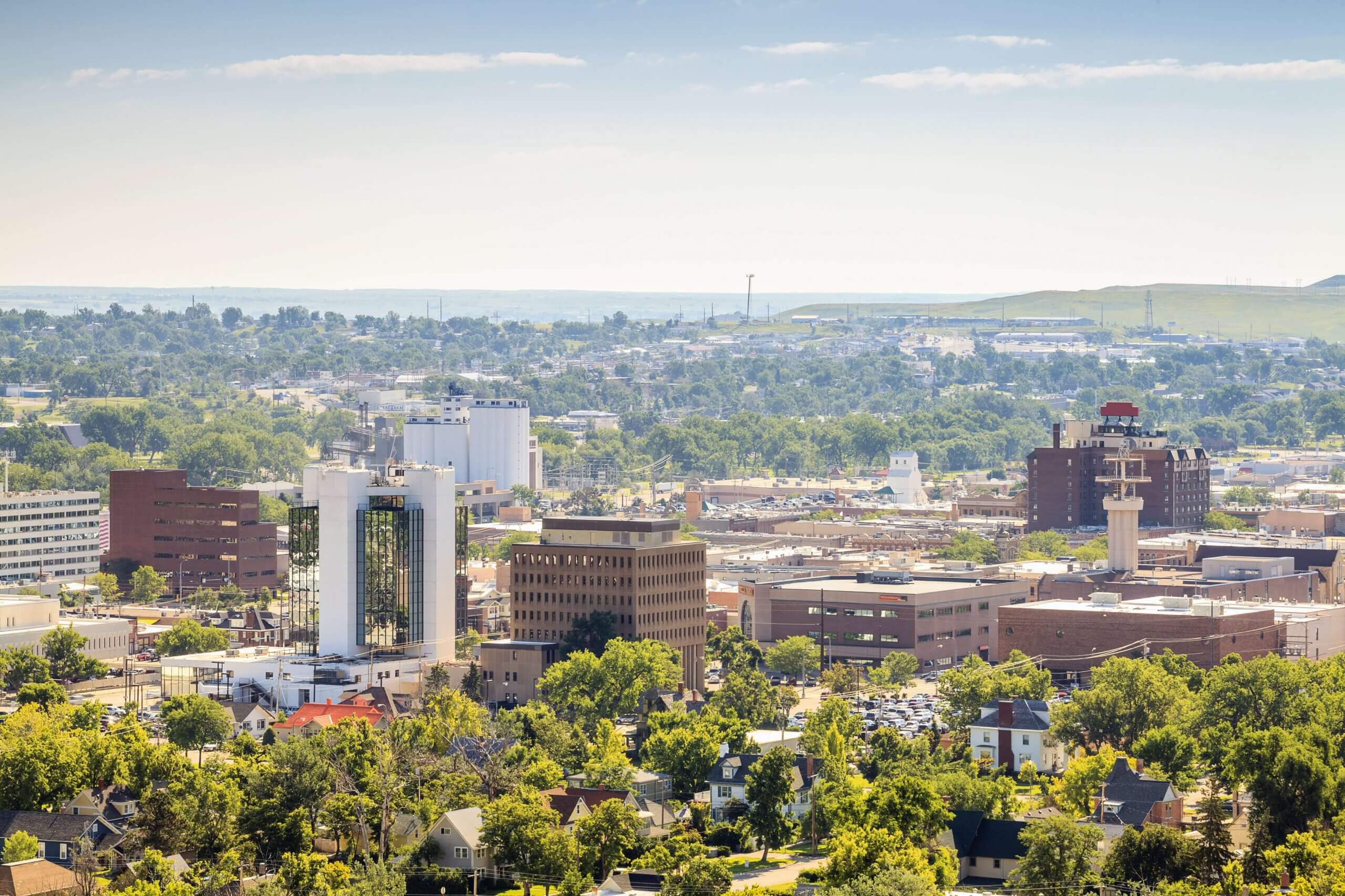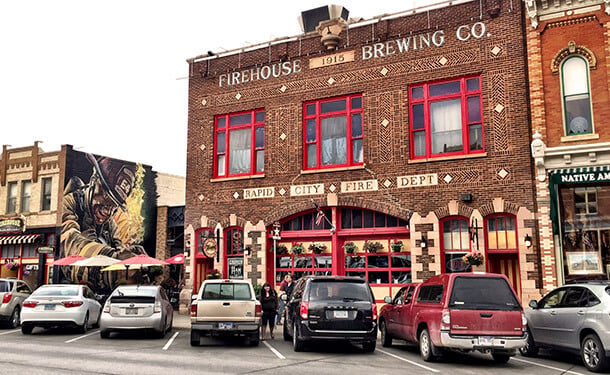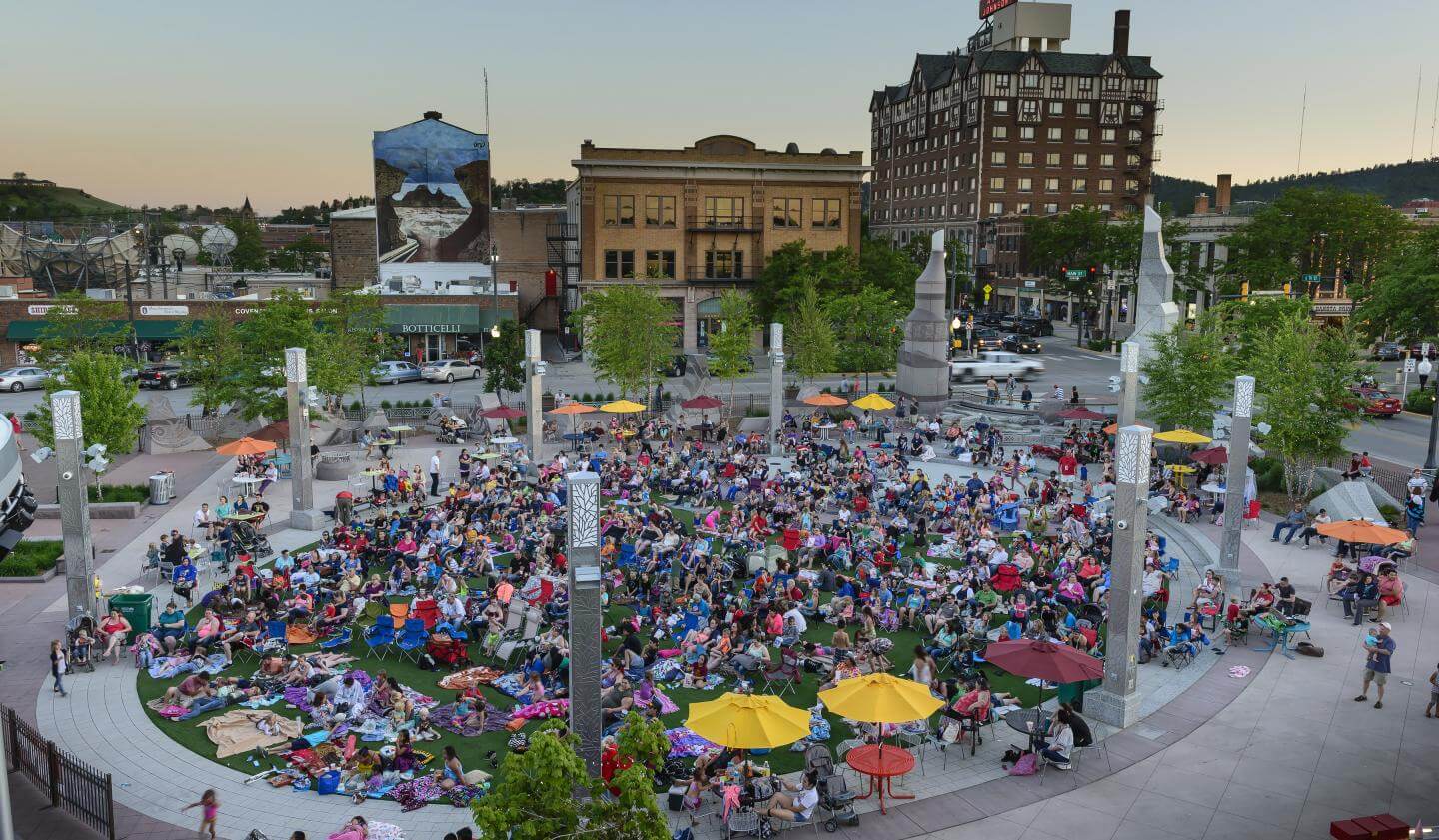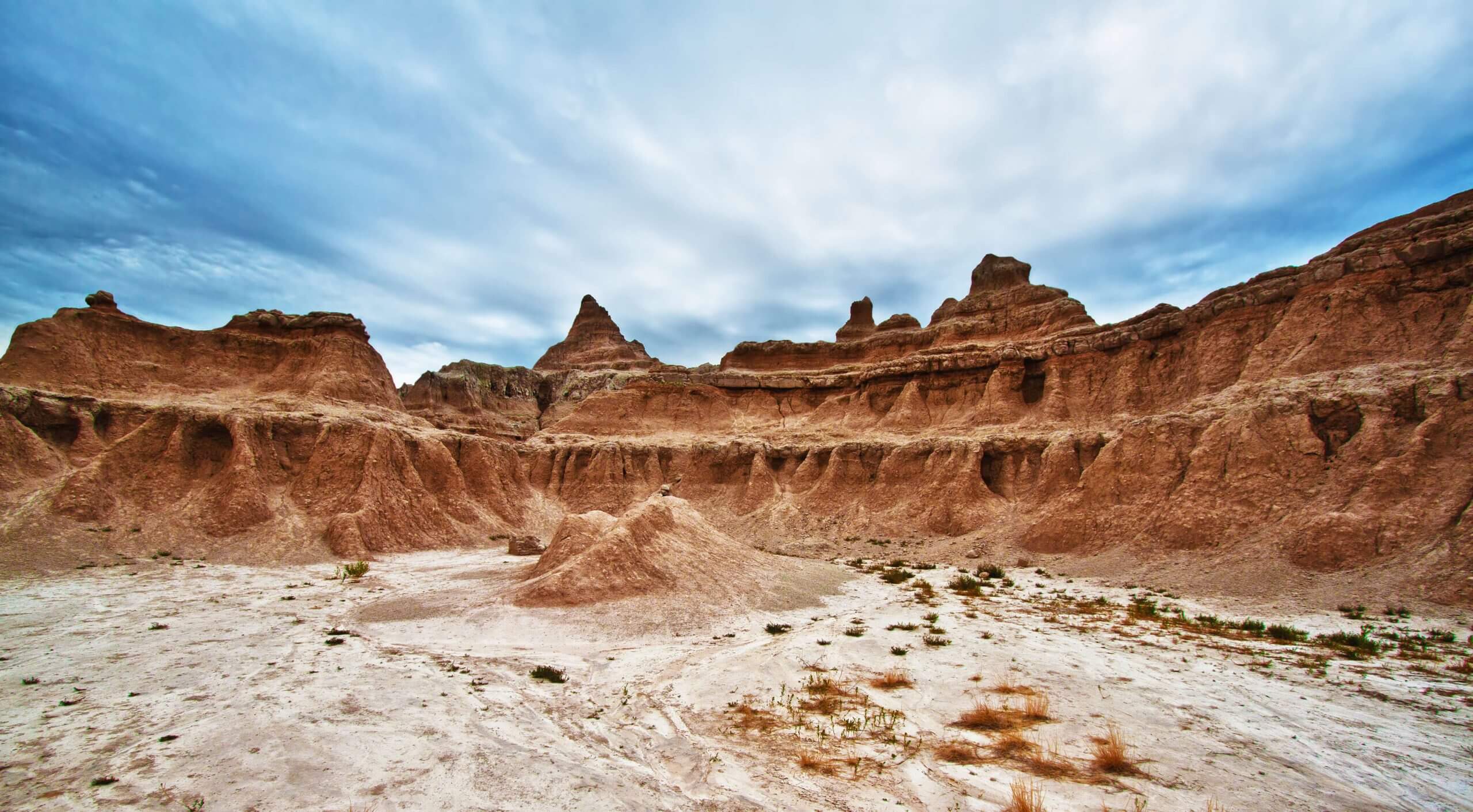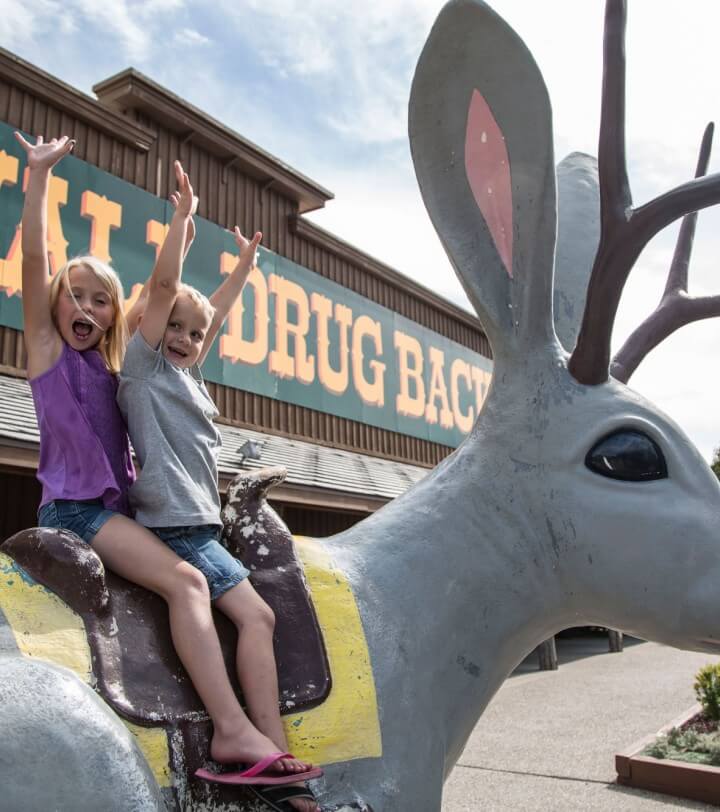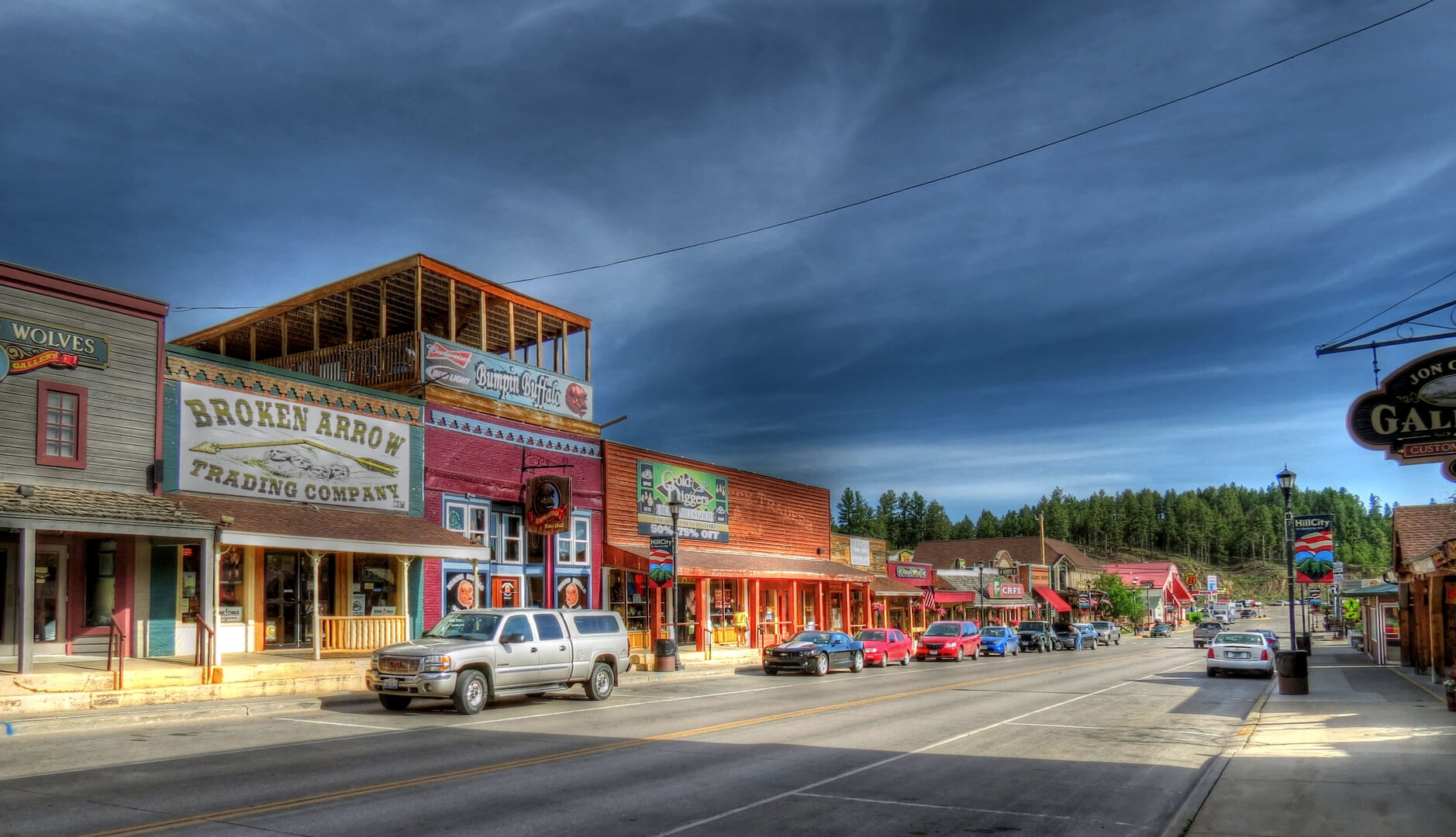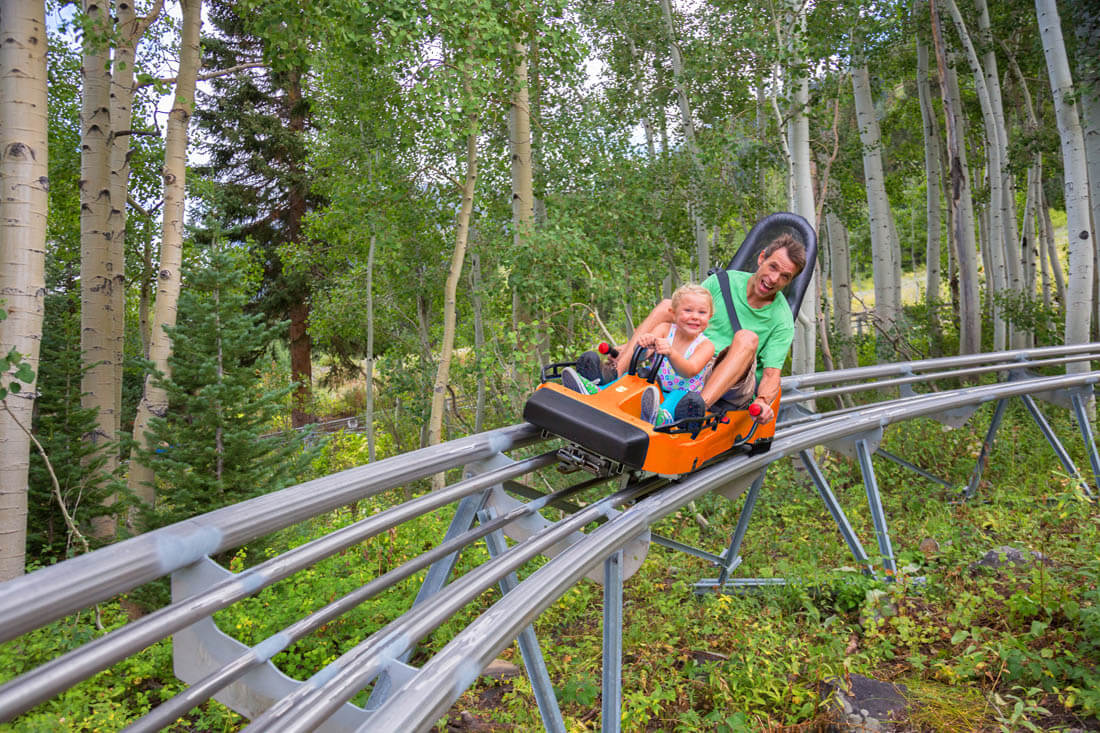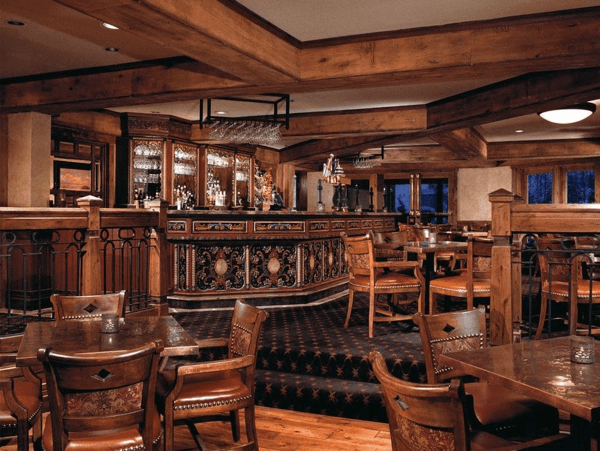
Park City is a mountain town with the spirit of an American metropolis. While restaurants and hotels in this northern Utah city are on par with venues in bigger markets, Park City still manages to maintain the quaint charm of a happy little hamlet. It’s a best-of-both-worlds combo that ensures world-class hospitality and cuisine, juxtaposed with an all-natural backdrop of pristine peaks and sublime nature. It’s the rare city where you can lose yourself in the mountains by day, and then literally ski directly up to an après-ski lodge or farm-to-table eatery. From idyllic slope-side inns to wood-fired dining on postcard-perfect Main Street, these are the gems that make Park City a singular American destination.
Peerless Park City Lodging
Sprawling luxury, stunning architecture and above-and-beyond hospitality make Park City’s lodges look more like Disney castles than hotels. Fantasy places like Stein Eriksen Lodge, the Waldorf Astoria Park City and the Grand Summit Hotel far exceed standard hotel expectations, ascending to new levels of opulence entirely. Seemingly every lodge in Park City feels like a full-blown town in and of itself, outfitted with on-site restaurants, shops, cafes and spas, with easy — or direct — access to slopes and trails for skiing, snowboarding and hiking. In a lot of ways, these mountainside lodges perfectly exemplify the Park City spirit, immersing modern luxuries in the region’s natural wonders.
The Stein Eriksen Lodge, named for a Norwegian Olympic Gold Medal skier, is like an elegant European chalet amidst Utah’s world-renowned mountains. Consistently among the hightest rated hotels in the country and complete with a world-class spa, the property is the quintessential destination for après-ski traditions, fine dining and of course, upscale accommodations. With ski-in/ski-out access, it’s easily accessible for mountain-goers to pop in for some fireside wine, cocktails and snacks. The lodge also added an intimate movie theater to its amenities.
As with all its locations worldwide, the Hilton flagship luxury brand sets a standard for excellence at the Waldorf Astoria Park City. Near Canyons Village, nestled along the mountainside, the property feels like an extravagant hideaway.
It’s the kind of place you can hole up in and never want to leave, thanks to the sheer decadence of each and every room, including the two-level, four-bed suites. In addition to direct access to seasonal activities like golf, snowmobiling, skiing, hiking and horseback riding, the hotel sets itself apart with its “signature experiences.”
The Waldorf Astoria, Park City
These immersive options allow guests to venture out and explore Park City from a unique vantage point, whether it be via motorcycle rides through Uinta National Forest or behind-the-scenes tours and tastings at Park City Brewery. The resort also caters to families with children and to pet owners, offering in-room welcome packages for furry friends and indoor “camping” experiences for kids, complete with tents, stuffed animals, lanterns and story books.
While most resorts in Park City are tucked in the foothills, Main & Sky is unique for its location right on historic Main Street. An iconic all-American thoroughfare lined with indie boutiques, saloons, theaters and restaurants, this is the heart and soul of Park City. Due to the restricted size of the street, however, lodging options are limited.
In contrast with castle-sized resorts nearby, Main & Sky packs all of its grandeur into just 33 suites and penthouses, many with balconies offering prime Main Street views. If you have money to burn, the three-bedroom penthouse is as regal as it gets: full kitchen, pool table, and outdoor hot tub.
A penthouse suite at Main & Sky
Be warned: this kind of luxury is all too easy to get used to. There’s also a spa and a soulful, locally sourced restaurant called Coal & Lumber.
Fresh off a multi-million dollar renovation, Grand Summit Hotel in Canyons Village is ready for its closeup. Here, at the foot of Park City Mountain, you’ll find an ornate facility filled with suites and majestic vistas. Beyond the stunning surface, though, the hotel brings the decadence with a huge heated outdoor pool, hot tubs, health club, ski-in/ski-out access, chef-driven restaurants and immediate access to a slew of slopes. Lifts whisk skiers up to moderate slopes, while a sleek “orange bubble” express route, a fully-enclosed and temperature-controlled tram, takes more experienced visitors up to the steeper peaks. In the summer, crowds can take advantage of hiking trails, mountain bikes, zip lines and alpine coasters.
Park City’s international reputation is largely hinged on ski slopes and movie festivals, but the town’s restaurant scene is rapidly on the rise as well. For a place with only a few thousand year round residents, the ratio of high-quality restaurants per capita is astonishing. And Main Street is A veritable Restaurant Row.
Be sure and book a meal at The Mustang, a Main Street mainstay helmed by an owner and chef duo who met while working together at the inimitable Stein Eriksen Lodge. Their attention to hospitality and quality is evident in the friendly service, artful ambience and menu, which toes the line between locally sourced ingredients and global inspirations. It’s the kind of place where fried Utah goat cheese and local trout share menu space with shrimp potstickers, duck chile rellenos and Chilean sea bass with lemon beurre blanc.
Decked out with enough internationally sourced artifacts, Turkish chandeliers and Shanghai-inspired paraphernalia to constitute a museum, Wahso is one of the most striking dining destinations on Main Street’s restaurant-packed strip. The restaurant hails from prolific local restaurateur Bill White, the man behind other Park City hits like Ghidotti’s and Chimayo. Wahso dives deep into contemporary pan-Asian cookery with dishes like crispy Brussels sprouts with gochujang mayo, larb duck lettuce wraps, Wagyu pho and caramelized Japanese eggplant with yuzu-cardamom coconut milk.
You can’t stroll down Main Street and not stop in at The Spur for a shotski. The infamous mountain town pastime, wherein groups do simultaneous shots off a ski, is best ordered at this timeworn saloon, which packs the house for nightly live music, dueling pianos, eclectic comfort food and cocktails made with local spirits.
You’d be remiss not to follow the aroma of wood-burning ovens down Main Street to Firewood, a sleek and stylish haunt from acclaimed chef John Murcko. As the name suggests, the centerpiece of the restaurant is the wood-fired kitchen, which utilizes an array of different woods to imbue specific flavors and aromas into hearty, seasonal dishes. This includes smoked duck breast with grapes and mostarda, coal-roasted beets with cinnamon-sherry vinaigrette and blue cheese, juniper-spiced elk loin with parsnips and cauliflower cream and bronzini with artichokes and caper pesto. Don’t miss the Nickel Bar downstairs, a casual nook more focused on snacking and sipping, with items like empanadas, burrata and excellent cocktails that mimic the kitchen’s ethos in terms of fragrance and complexity.

What do brisket, glow-in-the-dark paddle boards, watermelon seed-spitting competitions and mermaid societies have in common? They all play an integral — and unique — role in the distinct character of Texas Hill Country. A stone’s throw from Austin proper, the idyllic region is full of surprises throughout its counties, towns and up-and-coming cities. Well beyond barbecue, a local staple that’s been drawing diners for generations, Hill Country has evolved into a thriving destination filled with restaurants, lodges, sights and activities.
Hill Country cuisine and ‘cue
When it comes to dining in Texas, barbecue is a given, especially in the Austin area, home to institutions like La Barbecue and Franklin . Venture beyond city limits, though, to find the real gems.
Named “Barbecue Capital of Texas” by the Texas legislature, Lockhart is home to icons like Smitty’s Market and Black’s BBQ as well as Kreuz Market, which has been smoking meat in brick pits since 1900. In Driftwood, The Salt Lick cooks up sausage, brisket and ribs over the same flame they’ve been tending since 1967.
Folks flock from all over to sample the goods at The Salt Lick, which has grown to include its own wines using Hill Country varietals, as well as cobbler, bison ribs and even periodic pizza nights on the patio.
Barbecue is the tip of the iceberg when it comes to food in Hill Country. Visiting the region and eating nothing but smoked meat would be tantamount to visiting New York City and eating nothing but pizza by-the-slice. Both traditional establishments and neoteric eateries throughout the region form a cohesive culinary community like no other.
This includes the quaint Texas Pie Company in Kyle, where Julie Albertson draws inspiration from her grandmother to bake desserts so delicious they’re practically single-handedly responsible for earning the town the title of “Texas’ Pie Capital.”
Some of the offerings at Crepe Crazy, which also does a bustling catering business
Then there’s the heartwarming Crepe Crazy, a deaf-owned Dripping Springs cafe with an all-deaf staff. The restaurant has created opportunities for locals who are deaf and wowed patrons with a menu that combines traditional staples and offbeat originals. A second location was recently opened in Austin.
Throughout the region, restaurants maximize local ingredients and the seasonal bounty to cook what they’re calling “Hill Country Cuisine.” Thanks to the temperate weather and year round growing seasons, there’s always plenty for chefs to work with, along with ample inspiration and regional influences, spicing up flavors with ingredients derived from Tex-Mex, New Orleans, India and beyond.
Restaurants like The Leaning Pear in Wimberley and Creek Road Café in Dripping Springs are paving the way, adapting local ingredients with inspiration found as close as the patio herb garden or as far away as Asia.
The Leaning Pear spotlights flavors indicative of Texas, Mexico and the Southwest, with items like roasted poblano pimento cheese, chicken with green chile-bacon grits and braised pork carnitas with watermelon and blue corn capricho. At Creek Road Café, the kitchen casts a global net for its eclectic menu, which features the likes of fried Gulf oysters, miso-marinated Scottish salmon and beef tenderloin filet with Duchess potatoes and Cognac cream sauce.
One of the biggest dining surprises in all of Hill Country is Restaurant Jezebel, a tiny fine-dining space tucked inside Lockhart Bistro. The work of revered chef Parind Vora, the six-seat nook serves ever-changing, customized tasting menus based on conversations the chef has with diners when they arrive, leaving him to cook up degustations essentially on the fly. With no printed menus, each experience is totally original, drawing upon the chef’s travels, work experiences all over the world, his Indian heritage and his passion for local sourcing. At any given time, a meal at Jezebel might include hearts of palm over squid ink gazpacho, followed by a dish using turkey the chef shot himself.
Across the boozy spectrum, Hill Country has grown into a well-rounded drinking destination as well. To best dive in and experience all of it, embark on the Dripping Springs Wine Trail, an immersive DIY-style tour that includes nine local wineries, three distilleries and four breweries (bus tours are available). Featuring the best of the best, destinations include Bell Springs Winery, Deep Eddy Vodka, Duchman Family Winery, Wetcave Valley Winery and Salt Lick Cellars.
One exciting newcomer to the mix is Desert Door Distillery, a Driftwood tasting room specializing in sotol. Similar in appearance to agave plants, with a distilled flavor somewhere in between tequila and mezcal, sotol is still a rarity in the U.S. In fact, Desert Door is the first and only sotol distillery in the country, using sotol plants from West Texas to create spirited cocktails like palomas, margaritas and tomatillo Bloody Marys. Order a drink at the bar and linger in the chic lounge area, outfitted with modern, stylish furnishings inspired largely by the artsy West Texas town of Marfa.
Unique boutique accommodations
Hotels and campgrounds abound in Hill Country, but it’s the one-of-kind inns and lodges that really capitalize on the region’s character.
In Dripping Springs, The Alexander at Creek Road is a serene oasis consisting of a few intimate cottages alongside rural farmland. Bedecked with homey decor, each abode is charming and transportive.
For something more luxe, Sage Hill Inn & Spa is an elegant rural retreat set back a mile off the road in the Kyle countryside. Featuring multi-room suites, individual cabins, upscale spa, swimming pool and top-tier restaurant, this Hill Country haven is the perfect place to hole up and relax.
There are miles of hiking trails lining the grounds as well, winding through forests and along the river bed. In the morning, take your coffee outside to your patio and look for Kevin, the resident peacock who’s been known to strut around the common areas or chase wild turkeys.
Another unique option is the Ellison House in Lockhart. The historic farmhouse-style home has been renovated and updated to accommodate a few boutique rooms, each one stylized with art and sleek fixtures. There’s a common kitchen and living room, making it great for groups, and the fact that it’s walking distance to downtown Lockhart is a boon.
Make a splash in the San Marcos
In spite of its name, Hill Country’s star attraction is actually more aquatic. The San Marcos River is a spectacle to behold and a centerpiece for activities throughout the area.
The thing that makes the river so stunning is its tropical turquoise hue, making it look more like a Caribbean beach than a Texas river. Crystal-clear and pristine, locals and visitors frequent it for tubing, kayaking, canoeing, snorkeling, swimming and even nighttime paddle-board “glow” tours. Operated by Paddle SMTX, the one-of-a-kind activity utilizes boards with special water-proof LED lighting that glows different colors underwater. Another offbeat option is the company’s “Paddle Barge,” a giant board that can accommodate up to four paddlers.
The tropical-blue water might also explain why mermaids have become a symbol of the San Marcos River, and why the Mermaid Society of San Marcos is a thriving organization. For decades, mermaids have been local lore, thanks to a bygone theme park called Aquarena Springs, which had an underwater theater with mermaids. In 2016, the Mermaid Society hosted San Marcos’ first annual Mermaid Week as a way to bring mermaids back to local icon status, to highlight the city’s art scene and to protect and preserve the river. The festival features a mermaid parade, the “Mermaid Splash” festival and the “Mer-tini” cocktail competition.
Tried and true Texas traditions
San Marcos boasts some of the largest outlet shopping centers in the country, with destinations like Tanger Outlet Center and San Marcos Premium Outlets routinely ranked as top tourist destinations in the state each year. Basically the Texas version of the Mall of America, the outlets are home to more than 240 stores, restaurants, food courts and a free trolley service.
For something a bit more boutique, San Marcos’ historic downtown square is home to numerous independent cafes, pubs, ice cream shops and vintage stores. Paper Bear is a favorite for quirky gifts and jewelry, while Twice Blessed is a popular go-to for vintage housewares, accessories and clothes.
While Austin gets all the glory for Texas’ live music scene, its roots are deep in Hill Country. The oldest dance hall in the state, Gruene Hall, looks and feels like history. Over the years, it’s played host to new musicians and legends alike: Garth Brooks, the Dixie Chicks, George Strait and Willie Nelson have all graced these hallowed halls.
Gruene Hall, the oldest dance hall in Texas
As rents continue to soar in Austin, musicians are once again turning their attention back to San Marcos, making it a win-win for Hill County denizens looking for more affordable performances in more intimate venues.
The most colorful pastime in all of Hill Country may very well be the Watermelon Thump, which has been taking place in Luling every summer since 1954. At the height of watermelon season, this small town comes together to celebrate the harvest in all kinds of unique ways over the course of four days. In addition to live music, rides, beer gardens and festival vendors, the tentpole is the watermelon seed-spitting competition. Spitters come from all over to test their skills and spit seeds as far as they can down the “spit way.” The current record for longest distance belongs to Luling resident Lee Wheelis, who spit his seed a staggering 68 feet, 9 1/8 inches. There’s also a Thump Queen who presides over the Watermelon Thump Parade, plus an auction of the biggest and best melons.

While lots of U.S. cities boast proximity to nature, few possess such a seamless integration of both urban and rural life as Asheville, North Carolina. Here, in the valleys of the Blue Ridge Mountains along the shores of the French Broad River, two lifestyles blend harmoniously. As restaurants, breweries and music venues perform at the kind of high-caliber you’d find in a much larger metropolis, this city of about 90,000 also maintains its rustic roots with an easily accessible abundance of nature and world-class outdoor activities. The best part is that not only do these two facets co-exist, they thrive off one another, forming a cohesive landscape like no other place in the U.S.
Although cities like Denver and San Diego have long dominated the craft beer conversation, Asheville lays claim to the most breweries per capita of any city in the country. With upwards of 30 within city limits, spanning a wide array of styles and techniques, the local beer boom has raised the bar for burgeoning breweries across the U.S. Far beyond your standard brews, the city fosters creativity and innovation with places like Ginger’s Revenge, a ginger beer brewery that debuted early 2017, Ben’s Tune-Up, an unassuming beer joint that just so happens to be one of the few places in the country brewing its own sake, or the sour-centric Wicked Weed Funkatorium. Ever since Highland Brewing Company, the city’s first brewery, emerged in 1994, Asheville’s beer scene has been on a steady buildup; so much so that the region has become just as renowned for its brews as it is for its Appalachian hikes.
One of the best ways to drink it all in is simply by meandering around the South Slope district, an area clustered with nearly a dozen breweries. Here you’ll find Green Man, Hi-Wire, Ben’s Tune-Up, Burial Beer, Twin Leaf and others, making for a convenient and leisurely beer crawl spanning a wide variety of styles and flavors. An exciting newcomer to the lineup is White Lab, a company specializing in brewing yeast, which opened an Asheville location earlier in 2017. The pristine facility also added a restaurant and tasting room, highlighting fermented foods and beer-infused cookery. Unique standouts include pizza made with pure liquid yeast and fermented sauces.
In addition to a myriad of smaller breweries, national juggernauts like Sierra Nevada and New Belgium put down East Coast roots in Asheville with theme park-sized facilities, solidifying the city’s role and importance in the American beer scene.
Right on the heels of Asheville’s booming beer scene, local restaurants have risen to the occasion as well. Considering the city’s proximity to copious farmland and its fruitful year round growing seasons, chefs have plenty to work with. From low-key to high-brow, the restaurant landscape is as diverse as ones found in much larger cities, which only adds to the individuality of a town like this.
Rhubarb is a pioneer in Asheville’s restaurant community, featuring award-winning seasonal fare by acclaimed chef John Fleer. Any night of the week, the restaurant bustles with convivial diners clamoring over shared plates of heritage pork meatballs with sour corn grits, wood-roasted trout with preserved lemon remoulade and rhubarb-glazed duck confit with sweet potato cakes and rhubarb salsa. Around the corner in the rear of the building, you’ll find The Rhu (http://www.the-rhu.com/), the casual bakery and cafe component, where habit-forming almond butter-glazed donuts and cream of wheat (made with local Carolina wheat, no less) with maple cream cheese are the order of the day.
Down the street from Rhubarb, Cúrate reigns as one of Asheville’s most popular stalwarts, and rightfully so. Chef Katie Button works wonders applying a Spanish accent to locally grown ingredients and meticulously sourced provisions, dishing up tapas like fried eggplant drizzled in mountain honey, salt-cured sardines with pickled raspberries and charcoal-grilled turnips with turnip greens, sherry, almonds and leeks.
For something a little more casual and quick, the restaurant features a nice charcuterie bar menu, focused on snacky bites like jamón Iberico, cheeses and fried almonds, all of which pair nicely with vermouth by the glass, cider or a cucumber-infused gin & tonic.
Venture away from downtown to park yourself at Gan Shan Station, a gas station turned East Asian restaurant whose effortless cool would feel right at home in any hip urban neighborhood. You can sit in front of the garage on the restaurant’s patio, or opt for a bar stool for one of the best seats in the house. As the open kitchen and bar whirs in front of you, tuck into sticky-spicy Korean chicken wings spiced with gochujang and shoyu, crispy salt and pepper tofu and green curried confit chicken thighs with pineapple, eggplant and cilantro.
Even Asheville’s most casual, accessible newcomers aim high, like Bone & Broth. A recent addition to the Chestnut Hill area, this English pub-inspired haunt exceeds adventurous expectations with rabbit wings, scallops with dehydrated salmon roe and ricotta gnocchi with braised wild boar belly. Don’t miss the bread either, served warm and crusty with whipped smoke tallow and butter. The pub of course also features its namesake bone broth, steeped for 48 hours before being ladled into steaming, fragrant bowls as a savorous starter.
Like other Southern cities, Asheville’s musical roots run deep, paving the way for a new era that’s helping to spotlight the city from a new angle.
The best aspect of Asheville’s thriving music scene is how integrated it is with its famed surroundings, making for venues and experiences that are wholly original.
From concerts at Sierra Nevada’s outdoor amphitheater to the Biltmore Concert Series at the iconic Biltmore Estate’s South Terrace, there’s hardly an arena or hall that doesn’t feel distinctly Asheville. It’s these kinds of immersive settings that increasingly attract musical acts, coupled with the city’s longstanding relationship with music at an organic level.
South Terrace on the Biltmore Estate
Surprises and performances await around nearly ever corner, like White Horse Black Mountain, a car dealership-turned-music venue. Or the Woodrow, an Asheville-born stringed instrument that you can learn about at the Woodrow Instrument Company. Or the weekly Friday night drum circles that has locals and visitors dancing along in the streets.
From the old (the nation’s longest running folk festival, the Mountain Dance and Folk Festival has been active since 1928) to the new (Explore Asheville Radio is a new station focused on local artists), Asheville’s best musical asset is its ability to celebrate its historic past while pushing towards the future.
All that eating, drinking and dancing is a surefire way to boost energy for hiking, kayaking, paddle boarding and bellyaking, an Asheville novelty that entails face-first kayaking on your belly. Fortunately, with its one million acres of forest surrounding the skyline, getting out into nature is a natural way of life around here.
Hiking is Asheville’s crown jewel, with 40 nearby mountains that exceed 6,000 feet for the diehard, along with lower and more reasonable day hikes that are an easy jaunt from downtown. The Blue Ridge Mountains, Appalachian Trail and Great Smoky Mountains National Park are all a stone’s throw, each affording striking sights from various vantage points. Blue Ridge Hiking Company is a great company to connect with, thanks to their diverse portfolio of routes and durations. Hoof it into the Blue Ridge Mountains where sun-soaked trails provide glimpses of wildlife, waterfalls, granite domes and plant species found almost nowhere else. If you’re looking to capture that awe-inspiring vista in an afternoon, try Summit Sam Knob. A 2.2-mile round trip hike with easy access off the Blue Ridge Parkway, the trail ascends to 6,050-feet, with sweeping views of the mystical, blue-tinged mountains.
Rafting at Nantahala Outdoor Center
Just as prominent as hiking in Asheville is the popularity of water activities. Between the Nantahala and the French Broad Rivers, options run the gamut from whitewater to beer tubing. For something adrenaline-pumping, head to the Nantahala Outdoor Center, the country’s largest whitewater outfitter. They’ll equip you and guide you through some of the region’s more action-packed waves.
Meanwhile, the French Broad, one of the oldest rivers in the world, ambles northward at a pace more befitting stand-up paddle boarding, tubing, swimming and that aforementioned bellyaking. Wai Mauna is one of the city’s premiere companies for paddle boarding in particular, and they’ve even added a six-person giant paddle board option for well-balanced groups.
One particular activity that epitomizes Asheville is beer tubing. Floating lazily down a river via inner tube with coolers of beer in tow is something found throughout the country, but here in Asheville, at companies like Zen Tubing, the activity perfectly captures everything the city is best known for in one blissful afternoon. Especially if you’re swigging a can of New Belgium beer as you drift by the riverside brewery.
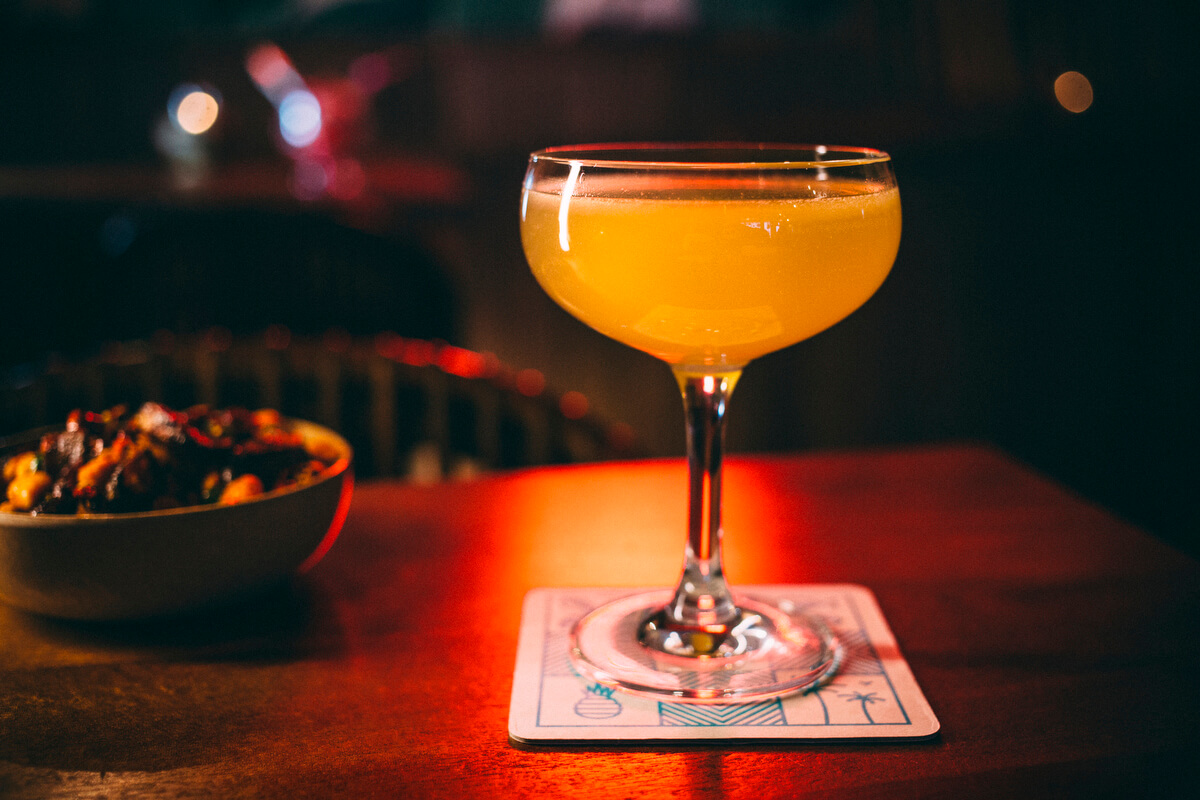
Chicago boasts some of the best bars in the country, with drinking establishments of all styles spanning the city’s myriad neighborhoods. From cocktail tasting menus at The Aviary in Fulton Market and $100 daiquiris made with rare spirits at downtown’s Milk Room, to culinary-inspired craft beer at Moody Tongue’s newly opened Pilsen tap room and tiki tipples at River North’s Three Dots and a Dash, it’s easy to drink well in the Midwestern metropolis. Over the past year or so, one neighborhood that’s emerged as a bar Mecca is Logan Square, a northwest side enclave brimming with more booze than people.
Pioneer of the craft cocktail
Logan Square, conveniently situated along the CTA Blue Line between O’Hare International Airport and downtown Chicago, can lay claim to being one of the birthplaces of Chicago’s craft cocktail boom, thanks to groundbreaking spots like The Whistler. The nondescript music venue/cocktail haunt is still packing in the crowds for its ever-changing arsenal of seasonally inspired mixed drinks, like the green-hued Masa Verde made with mezcal, absinthe and verdita, or the cozy Mothership Connection with cold-brew coffee, rum, lemonade and pineapple.
This is also where Paul McGee, one of the most renowned and talented mixologists in the country, made a name for himself before skyrocketing to fame with crowd-pleasing bars like Lost Lake. Located just up the street from The Whistler, this tiki wonderland transports guests to a tropical oasis filled with irreverent drinks, quirky glassware, twisty straws aplenty and a general beach party vibe. Drinks change fairly often, but some noteworthy hits include Stranger in Paradise with tequila, Rhum Agricole blanc, pineapple, Falernum, cinnamon, allspice, angostura bitters and absinthe; and A Lonely Island Lost in the Middle of a Foggy Sea, which contains two kinds of rum plus Rhum Agricole blanc, coffee, pineapple, lime and Demerara.
Elsewhere in the ‘hood, drinkers can sip habit-forming Negroni slushies at Parson’s Chicken & Fish, a sprawling watering hole with quenching slushy concoctions and other mixed drinks like Oaxacan On Sunshine (El Buho mezcal, Cocchi Americano, grapefruit, habanero, soda, red wine) and Pineapple Punch (Plantation Pineapple Rum, Aperol, pineapple juice, lime, tea, Angostura Bitters).
Parson’s signature Negroni slushy
A couple blocks west of Parson’s is Scofflaw, an ode to gin with lip-smacking combos like aperol, cantaloupe, fresno chile and gin. Come on a brisk winter night and perch by the fireplace for a truly memorable evening. Continue your cocktail crawl even further west along Armitage Avenue with a stop at Best Intentions for boozy horchata and herbal milkshake-like drinks that taste like mint chocolate chip ice cream.
The best of the breweries
While cocktail bars continue to establish themselves all over the neighborhood, Logan Square is also home to some exemplary breweries and taprooms. Revolution Brewing popped up on Milwaukee Avenue well before the neighborhood was the hot spot it is today, churning out a lineup of brews like its famed Bottom Up Wit, Eugene Porter and Anti-Hero IPA. Shortly after the brewpub began packing in the crowds, Revolution doubled down with another facility a bit north on Kedzie Avenue. The industrial space is where Revolution does most of their brewing, and patrons at the bar can get an up close and personal peek at the process while they sip their ale.
One promising newcomer is Hopewell Brewing Company, a slick and inviting taproom with a modular interior reminiscent of something out of an IKEA catalogue. And that’s meant in the most complimentary way possible. The sunny space sports highly drinkable brews like its mouthwatering First Lager, its 24:37 Red IPA and the tangy All Hope Kettle Sour. Hopewell stocks a handful of nostalgic board games as well, in case you’re in the mood for Connect Four with your beer.
Proof that no potable goes underserved, one of the best wine bars in Chicago boasts a prominent locale right at the nexus of the neighborhood square itself. At Webster’s Wine Bar, a dimly lit nook that feels like a drinking parlor J.K. Rowling would imagine, the bar stocks upwards of 500 bottles, with several dozen available by the glass. Varietals span the globe, with both old-world and new-world wines getting due diligence, and sommeliers are well-equipped to guide you towards something you’ll love. Match your vino with any of Webster’s fantastic plates, designed for sharing and pairing. Items include bacon-wrapped dates, venison tartare and bistro hanger steak.
One new wine bar entry, located a bit further west of the square, adopts a Latin accent for its wine and food. Penumbra Wine Bar features a menu of ceviche and bocaditos, attuned to a miscellany of South American, Spanish and Californian wines.
Fresh bars seem to take shape every day in Logan Square, and there’s an exciting crop of newcomers that have recently opened their doors. This includes Estereo, a Latin-accented nook from established bar group Heisler Hospitality; The Ladies’ Room, a clandestine Chinese drinking den from the hitmakers behind Fat Rice; Spilt Milk Tavern, an ode to corner bars of yore with Concord Grape Juleps and boozy soft-serve ice cream; and Mezcaleria Las Flores, Chicago’s first mezcal-devoted bar chock full of offbeat agave spirits and cocktails served in unique “glassware” like gourd husks.
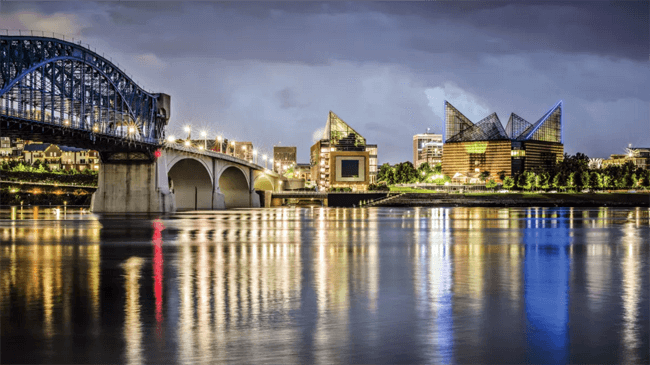
Few places fuse the old and the new better than Chattanooga, Tennessee, a Southern city steeped in historic lore as it carves its own path forward. Between its pivotal role in the Civil War and its longstanding ties to the railroad industry and whiskey distillation, this is a place rich with American antiquity. Meanwhile, modern developments, ecological practices and destination-worthy restaurants are helping freshen up the city’s identity for new generations. The result is one of the most unique cities in the U.S., whose harmonious past and present make for a bucket list destination like no other.
Unhindered by extravagant costs and frenzied competition inherent in larger cities, Chattanooga provides more flexibility and creative control for chefs, restaurateurs, brewers and mixologists, and they’ve got a hungry audience eager to enjoy the fruits of their labor. It also helps that chefs here are utterly surrounded by the bounty of Tennessee farms. Some, like Crabtree Farms, are even within city limits. This, coupled with the region’s lengthy growing season, means restaurants are always cooking up something fresh.
A fitting example is St. John’s, one of the city’s most lauded and enduring highlights. Although open for several years, the pristine spot stays fresh and relevant thanks to chef Rebecca Barron’s innovative style. She uses locally sourced, seasonal ingredients as the foundation for a menu featuring novel takes on classic dishes. Take the pork rinds and pastrami with watermelon hot sauce, for instance. Or try a “tasting of bluefin tuna” consisting of seared loin, sashimi and tartare with fried benne seed toast, heirloom tomatoes and squid ink yogurt. The accompanying wine list is just as thoughtful, and cocktails echo the seasonal sentiments of the food menu with the likes of Sunset on Broad, a rosy strawberry-infused tipple with gin, amaro, mint and pink peppercorn.
Another chef bolstering Chattanooga’s food scene and putting the region on the national map is Erik Niel, the force behind Easy Bistro & Bar. One of the city’s most iconic restaurants, the downtown charmer toes the line between elegant and full-fledged decadence, turning out light, clean preparations of vegetables and meats while also reinventing hearty Southern staples like cornbread and grits. While a few dishes remain fixtures, Niel is always updating much of the menu, showcasing the versatility of the Southern bounty as he pivots through the seasons. For summer, this means fried squash blossoms get sweetened with blackberries and smokey honey, while peaches and white asparagus enliven a plate of sockeye salmon.
Niel and his wife Amanda are also behind Main Street Meats, a feverishly popular meat Mecca that doubles as a market. More casual than Easy Bistro & Bar, Niel gets playful with sandwiches and plates that prove why the American Southeast is among the best regions in the world for farmland meats. Pork rinds dashed with harissa aïoli, prosciutto-topped corn chowder and smoky chicken sandwiches are a few prime examples, along with simply prepared steaks, habit-forming burgers and bacon-studded potato salad.
Even Chattanooga’s most casual offerings manage to surprise and delight. Like The Flying Squirrel, a convivial bar and restaurant in a lofty, modern space with a serious penchant for local sourcing. Updated comfort food is the bill of fare, gussied up with products like local cheddar for pimento cheese, farm-fresh chicken for tacos and heirloom tomatoes from Crabtree Farms for a vegetal risotto. The drink menu is just as noteworthy, with both classic and contemporary cocktails and one of the strongest beer lists in the city. A huge draft list features everything from blackberry sour beers and coffee ciders to grapefruit shandies and German pilsners.
As evidenced by the city’s surging restaurant landscape, the hospitality scene is stronger than ever in Chattanooga. It’s a sentiment echoed by the local hotels as well, which include some of the most unique and colorful abodes in the country.
One of the most offbeat dwellings is the train hotel at the city’s historic Chattanooga Choo Choo. A fun, engaging way for visitors to experience the city’s longstanding role in railroad lore, the timeworn station provides rooms in its Pullman Train Car. While amenities are up to par with modern hotels, the motif harkens to yesteryear; a time when passengers traveling to and through Chattanooga would hole up in their sleeper cars in transit. While you’re here, swing by the Silver Diner for pizza and STIR for a cocktail or two. Songbirds Museum is an incredible music museum on the train station’s second floor, featuring the largest private collection of guitars in the world.
Inspired by Chattanooga’s reputation as a hiking and climbing paradise, The Crash Pad is a hip hostel that originated from a need for affordable dwelling for traveling climbers who needed a place to crash. While any kind of traveler can stay there for cheap, holed up in one of the Crash Pad’s numerous bunk beds or private rooms, the space has the look and feel of a mountainous base camp. It helps that it’s also fully loaded with a range of amenities and homey add-ons, like a full kitchen and an outdoor area with fire pit and gas grill. Located in the burgeoning Southside district, it’s a quick walk from local haunts like the Flying Squirrel right next door, Main Street Meats and Niedlov’s Breadworks.
It doesn’t get any cooler than the impossibly hip Dwell Hotel. A polished and colorful take on mid-century modern, the artsy boutique does retro right. The whole property looks like it was designed for the Instagram era, with pink-splashed walls, chic couches, vibrant flowers and gallery-worthy artwork, not to mention contemporary culinary art coming out of Terra Mae and the cocktails at Matilda Midnight, a cozy watering hole with a dark, celestial facade that looks like something you’d find in a planetarium. Each of the hotel’s 16 rooms are individually designed and inspired by various time periods and styles. The Tiki is an executive suite, a fireplace-equipped nook decked out with plants, art, colors and barstools that look like they’d be right at home in a tiki bar. Another glorious example is The Flamingo, a king suite bedecked with flamingo wallpaper, tropical art and funky, beachy furnishings.
Chattanooga’s hotel market has a bright future ahead of it, too. Marriott’s funky Moxy brand is set to expand into the city’s Southside in 2018, featuring a slate of hip amenities geared towards the millennial traveler, and 102 boutique rooms across four floors. Then there’s The Edwin Hotel, currently taking shape alongside the Tennessee River at the end of the famous Walnut Street Bridge — which makes sense, considering the bridge’s developer was Edwin Thacher. The artsy five-floor property has 90 rooms, a ground floor restaurant and rooftop bar, which should boast some of the most awe-inspiring views once the hotel cuts the tape next year.
Climbers staying at The Crash Pad aren’t the only adventure-seekers coming through Chattanooga these days. Thanks to the city’s smaller size and its close proximity to nature, the region is real haven for outdoors enthusiasts.
The Tennessee River waterfront is at the heart of downtown Chattanooga’s identity. Along with a 13-mile river park trail that gets walkers, joggers and cyclists up close and personal with the water, travelers can hop aboard the Southern Belle for a real blast from the past. The massive boat looks like a quaint vessel from the 1800s, providing a charming perspective of the city as it plies the river. One of the most popular tourist attractions in the city, more than 100,000 passengers board the Southern Belle annually, partaking in lunch cruises, dinner cruises or private charters.
Another cool way to hit the water is via the Tennessee Aquarium’s River Gorge Explorer. After you’re done drinking in the myriad sights at the riverfront aquarium, climb aboard the high-speed boat for a trip downstream through the glorious river gorge, where aquarium guides will help spot animals in their natural habitats. Each trip lasts about two hours, and boarding and debarkation take place at the riverboat pier two blocks from the aquarium.
For hikers, Chattanooga is filled with opportunity. Starr Mountain, Little Cedar Mountain, Rainbow Lake and Virgin Falls State Natural Area are just a few rife examples a stone’s throw from the city center. But the crown jewel is Lookout Mountain, a miles-long wonderland that expands three states and a miscellany of landscapes, from deep caverns below the Earth and staggering waterfalls to endless trailheads and rocky cliffs. A good starting off point, and one of the most popular segments of Lookout Mountain, is the historic Bluff Trail. Between five and nine miles, depending on which routes you’re looking to take, the looped trail provides consistently eye-popping views, whether it’s of steep cliffs, Lookout Valley, sinkholes or climbers traversing Sunset Rock. From this vantage point, a trail carved into the mountainside in the 1930’s, you’ll look upon land where Confederate generals once watched Union troops in the valley, another apt reminder of Chattanooga’s rich cultural significance.
From legendary train stations to world-class dining, urban farms and illustrious hikes through history, Chattanooga is an essential destination for travelers from all walks of life.
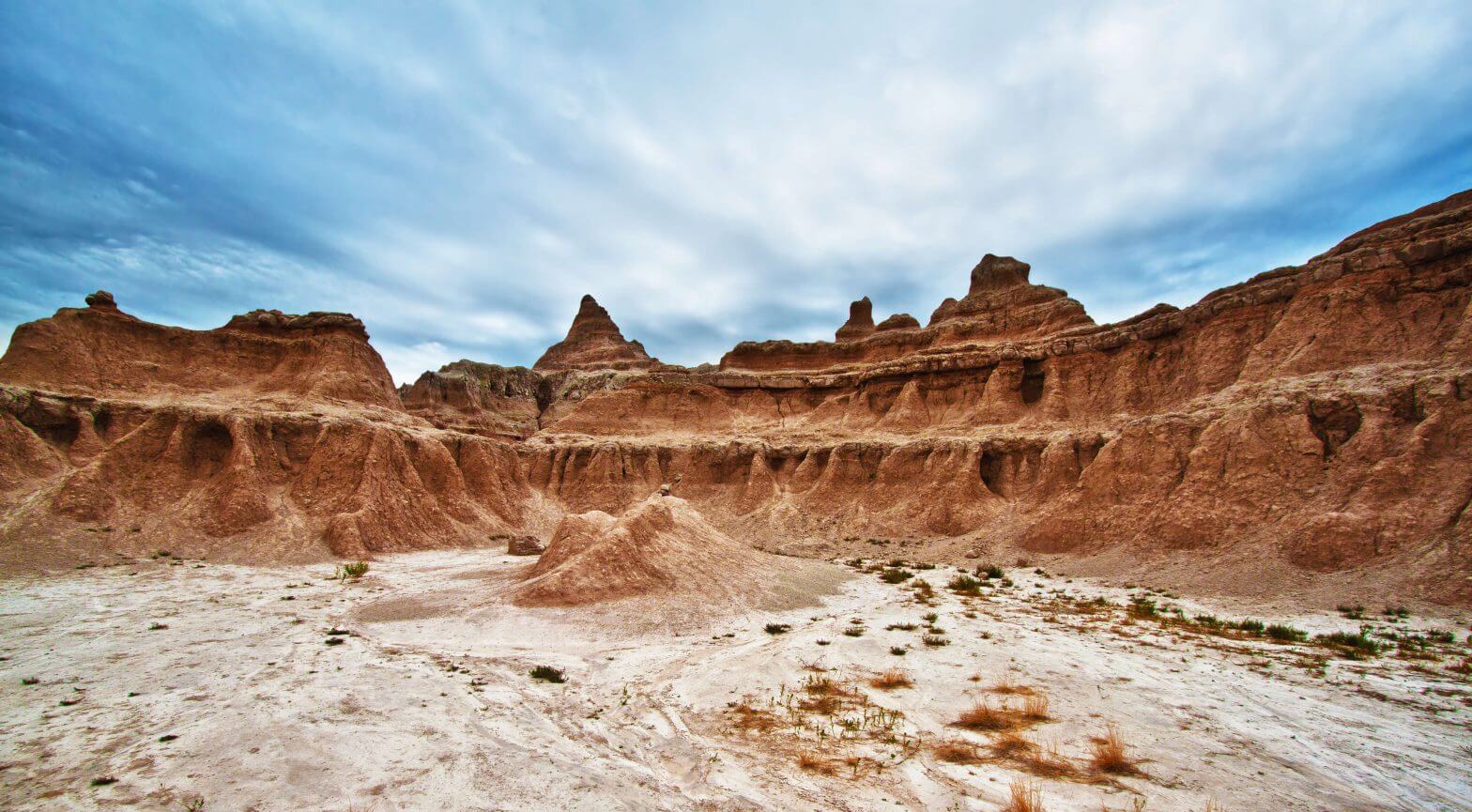
When many people think of South Dakota, Mount Rushmore is oftentimes the first—and perhaps only—thing that comes to mind. That’s a real shame, because this Great Plains state is home to some of the most striking scenery in the country and an array of wholly unique attractions, altogether comprising one of the most underrated regions in the United States. The Western portion of the state, home to the Badlands and the Black Hills, is accessible via Rapid City Regional Airport. All it takes is a rental car and a sense of adventure.
Rapid City is the urban hub of Western South Dakota, an area on the ascent in terms of development and cultural institutions, all while retaining a charming downtown landscape and a palpable sense of antiquity. Located a mere 10 miles from the airport along SD-44 W, it’s also easy to get to for most travelers. Nicknamed the “City of Presidents,” the modest city juxtaposes history with modernity in a way uncommonly seen in American towns.
This is evidenced by presidential statues dotting the sidewalks and the longstanding Hotel Alex Johnson, a prominent luxury property opened in 1928 with an allegedly haunted past. For the timid, rumored sightings of the benevolent Lady in White and a young girl have been confined to the eighth floor, so stay elsewhere in the 11-story property and you’ll sleep soundly.
History is also on full display at well established Native American businesses like the expansive Prairie Edge Trading Co. and Galleries, which pays homage to local Lakota history and artisans via books, quilts, jewelry and lots more. Don’t miss the Journey Museum and Learning Center either, which takes visitors on a time-traveling tour of the region’s Native American heritage in inspiring ways, from Black Hills geology to clothing and weapons fashioned by the Sioux Indian people.
While Rapid City is proudly rooted in its ancient heritage, it’s also segueing nicely into a new era by blending in modern establishments and exciting developments. Case in point, the city’s home to South Dakota’s first brewery, Firehouse Brewing Company, which features a rotating array of brews on tap in an old firehouse building. There are also cool new spots like Press Start, a subterranean arcade bar bursting with ‘80’s and ‘90’s nostalgia, and The Blind Lion, a speakeasy-style cocktail lounge manned by dexterous mixologists in a clandestine location downtown. For entry, your best bet is to visit Murphy’s Pub & Grill, and ask a server. While strolling downtown, swing by Main Street Square, a beautiful new public space that features live concerts, ice skating in the winter and other cultural affairs.
Firehouse Brewing Company
If you think you have an idea of what to expect from the Badlands, just wait. Situated roughly 63 miles from Rapid City, right off I-90 E, the eye-popping national park spans 244,000 acres of roving hiking trails, roadways, canyons and buttes comprised of clay soil and sedimentary rock. It’s as if the Grand Canyon combined with Mars; the terrain looks and feels like nothing else on the planet. The best part is how hands-on the park is, as visitors are able to hike and camp just about anywhere in the Badlands—just watch out for rattlesnakes and the occasional surly bison. There are also several designated hiking paths to hit up, including one with a somewhat intimidating ladder scaling the side of a canyon.
Just outside the Badlands, off SD-240 E, is Wall Drug, an iconic roadside attraction in Western South Dakota. It’s pretty impossible to miss, considering the highways leading up to it are lined with quirky billboards practically every 10 seconds. It’s worth a stopover for its dizzying souvenir shops, apothecary and quaint chapel that looks like something out of a Quentin Tarantino movie. There’s also a giant jackalope and animatronic T-Rex, because why not, and a cafe churning out delicious fresh donuts all day long.
Exploring the Black Hills
Driving towards the Black Hills national forest from the Badlands, about 103 miles back through Rapid City along I-90 W, terrain shifts from arid desert to lush trees, glistening lakes and dark, rolling mountains. It’s hard to believe the same region can lay claim to two such disparate landscapes, but it’s a testament to South Dakota’s unique natural beauty. This is where you’ll find Mount Rushmore, a rightful bucket list item for many a traveler, and most definitely worth a visit for its prominence in American history. But beyond the familiar, there’s much to explore in the Black Hills.
Under construction since 1948, Crazy Horse will be the largest mountain sculpture in the world when it’s finally complete. For reference, the entirety of Mount Rushmore would be able to fit inside Crazy Horse’s head. Designed to honor North American Indians and revered Lakota leaders like Crazy Horse, the carving is quite overwhelming and moving. There’s a visitor center at the foot of the mountain packed with paraphernalia and history, where attendees can learn about the family-operated endeavor and the rich Native American lore behind it. Occasional traditional Native American dances and demonstrations take place as well, providing an engaging way to get acquainted with the region’s heritage.
While towns like Custer are fairly prominent in the Black Hills, one that’s less familiar is Hill City. The charming town sports a bustling main street lined with saloons, inns and varying shops, and the 1880 Train is a blast from the bygone past for passengers looking to chug their way through the hills and forest to the town of Keystone. For those with an itch for hiking, the Mickelson Trail that winds through Hill City is requisite. The 109-mile trail is among the longest in the country, converted from former train tracks to a tour de force of the Black Hills for hikers, cyclists, walkers and cross-country skiers. You’ll meander under tunnels carved into mountain sides, over bridges, through fields and get up close and personal with nature at its most pristine.
For visitors looking for a bit of interactive entertainment, check out Rush Mountain Adventure Park, a family-friendly destination in Keystone with a cave tour, zipline and brand new hillside roller coaster. The cave is a great option for underground novices, as it’s a relatively short tour through a handful of subterranean rooms. Hit up the two-person zipline ride, which rockets you down over the parking lot and back, then buckle up for a coaster ride.
Rush Mountain Adventure Park
Unlike typical roller coasters, this sports one- or two-person carts that allow passengers to control their own speed with levers, affording a fantastic and thrilling way to drink in the mountain sights as fast or as slow as you’d like.
From the old to the new, and through impressively diverse landscape, the Western region of South Dakota proves itself to be an essential travel destination for visitors of all types.
Just another WordPress site
